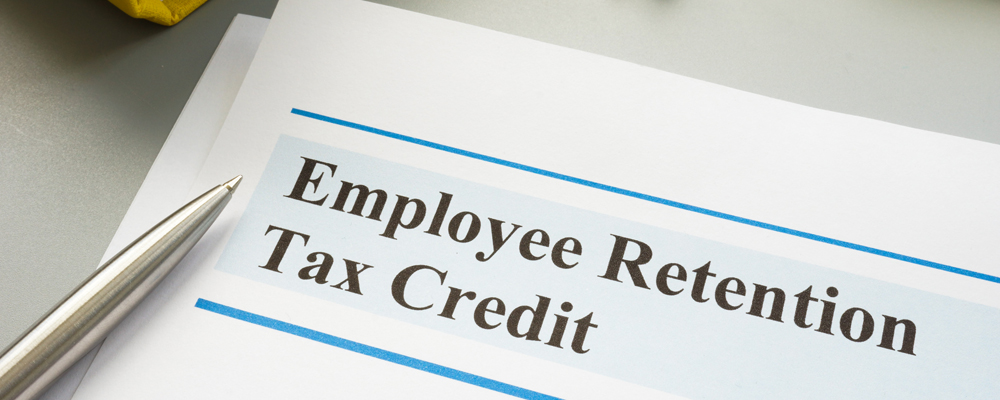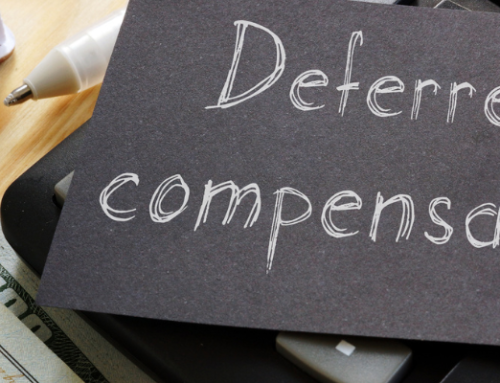We continue to field several questions regarding the Employee Retention Tax Credit (ERC). Many employers do not realize they could benefit from the ERC. As businesses close their books and records for 2021 and begin to work on tax compliance, it is a good opportunity to revisit the ERC to clear up any confusion that may exist.
The Coronavirus Aid, Relief, and Economic Security Act (CARES Act) economic stimulus bill was passed by Congress and signed into law by President Trump on March 27, 2020. The CARES Act included the Employee Retention Credit, which is a refundable tax credit against certain employment taxes equal to 50% of qualified wages up to $10,000 per employee, per year, paid after March 12, 2020, and before January 1, 2021.
The CARES Act also included a provision for the Payroll Protection Program (PPP) loans. The original rules required employers to choose between applying for the PPP loans or claiming the ERC. They could not claim both.
The Consolidated Appropriations Act for 2021 passed December 21, 2020, expanded the ERC to 70% of qualified wages up to $10,000 per employee, per quarter, beginning January 1, 2021, to June 30, 2021. The Consolidated Appropriations Act also changed the rules so that employers could receive a PPP loan and make a claim for the ERC so long as they are using different wages to claim PPP loan forgiveness from wages used to claim the ERC. There is no double-dipping.
The American Rescue Plan Act, passed March 11, 2021, extended the ERC through December 31, 2021. However, the Infrastructure Investment and Jobs Acts, passed November 15, 2021, retroactively ended the ERC program effective September 30, 2021, in order to use unspent funds to help offset the expenditures in the Infrastructure Bill.
Can I Claim the ERC and a PPP Loan?
Even if a business took PPP loans in 2020 and/or 2021, employers should review their 2020 and 2021 financial records to determine eligibility for ERC. If they qualify for 2020, they can claim a refundable tax credit for March 12 to December 31, 2020, for 50% of qualified wages, up to $10,000 per employee. If they qualify for 2021, they can claim a refundable tax credit for January 1 to September 30, 2021, for 70% of qualified wages, up to $10,000 per employee, per quarter.
How Do I Qualify for the ERC?
In order to qualify for the ERC, employers need to have experienced either a full or partial suspension of their operations because of a governmental order limiting commerce, travel or group meetings due to COVID-19, or have a significant decline in gross receipts. A significant decline in gross receipts begins on the first day of the first calendar quarter of 2020 for which an employer’s gross receipts are less than 50% of its gross receipts for the same calendar quarter in 2019. The significant decline in gross receipts ends on the first day of the first calendar quarter following the calendar quarter in which gross receipts are more than 80% of its gross receipts for the same calendar quarter in 2019. In other words, once you document a 50% decline in one quarter of 2020 compared to the same quarter of 2019, you remain eligible in 2020 so long as the measured declines are at least 20%, quarter-over-quarter.
For 2021, the decline in gross receipts only needed to be a 20% decline compared to the same quarter of 2019, which has made it easier for employers to qualify. You are eligible for a given quarter if you experienced the 20% decline in that quarter or in the previous quarter. That is, you can qualify for the first quarter of 2021 with a 20% decline either in the first quarter of 2021 or the fourth quarter of 2020.
What Qualifies as a Government Shut-Down?
Orders, proclamations, or decrees from the Federal government or any State or local government may be taken into account only if they limit commerce, travel, or group meetings due to COVID-19 and relate to the suspension of an employer’s operations or its trade or business. Governmental orders may include an order from the city’s mayor that all non-essential businesses must close, or a State’s emergency proclamation to shelter in place, or a local official imposing a curfew limiting operating hours. A voluntary suspension of operations by the employer is not eligible for the ERC. If an employer’s workplace is closed by a governmental order, but the employer is able to continue operations comparable to its operations prior to the closure via remote work, the operations are not considered to have been fully or partially suspended and do not qualify for the ERC.
The mere fact that an employer must make a modification to business operations due to a governmental order does not result in a partial suspension unless the modification has more than a nominal effect on the employer’s business operations. Whether a modification has more than a nominal effect on the business operations is based on the facts and circumstances. A governmental order that results in a reduction in an employer’s ability to provide goods or services in the normal course of the employer’s business of not less than 10 percent will be deemed to have more than a nominal effect on the employer’s business operations. The IRS has provided several examples. Occupancy restrictions at a restaurant with indoor dining may result in an actual, and more than nominal, reduction of the restaurant’s ability to service customers; however, an occupancy restriction at a retailer with sufficient physical space to accommodate its customers regardless of the restrictions will likely not result in an actual, and more than nominal, reduction of the retailer’s ability to provide goods to its customers. Modifications altering customer behavior, mask requirements or enforcing social distancing, or employees having to wear personal protective equipment while performing their duties will not result in more than a nominal effect on the business operations.
What if a Governmental Order Impacts a Supplier?
Is a business considered to have a suspension of operations due to a governmental order if a supplier suspends operations due to a governmental order? Yes, an employer can even qualify for the ERC if their suppliers’ business has been suspended due to a governmental order. If the facts and circumstances indicate that the business’s operations are suspended as a result of the inability to obtain critical goods or materials from its supplier because the supplier was required to suspend operations, then the business would also be considered an eligible employer for claiming the ERC. Keep in mind that this is not just a supply chain disruption which many businesses are currently experiencing. There needs to be an actual suspension of operations by a supplier due to a governmental order restricting operations for that supplier.
Who Qualifies as a Small Employer?
The ERC has been targeted to benefit small businesses. The specific circumstances in which wages will be considered qualified wages depend, in part, on the average number of full-time employees employed during 2019. For 2020, if an employer had more than 100 full-time employees in 2019 they are considered to be a large employer. Large Employers can only calculate ERC on wages paid to employees that were not providing services, i.e. the employee was paid not to work. Small Employers, those with 100 or fewer full-time employees, have qualified wages that are paid to any employee whether they were providing services or not. For 2021, the threshold to qualify as a Small Employer increased to 500 or fewer, further expanding the number of employers that may qualify for the ERC as Small Employers.
The IRS has defined a full-time employee as working on average 30 hours or more per week or 130 hours per month. In order to calculate the number of full-time employees for the year, employers are directed to count up all of the employees that worked more than 130 hours during a month for each of the twelve months, then divide that total number by 12. Employers need not combine part-time employees’ FTEs and add them to the full-time employee count. The test requires only the inclusion of full-time employees.
How Do We Treat Related Entities?
Employers under common control need to be aggregated together to determine whether they qualify for the ERC. If five or fewer persons control at least 80 percent of two or more entities those entities need to be combined for purposes of the ERC. If the controlled group is looking to qualify for the ERC based on a decline in gross receipts, the activity from all of the employers must be consolidated together for determining eligibility. Aggregation rules also apply to controlled groups for determining whether the group qualifies as a Large or Small Employer for determining qualifying wages.
Can a New Businesses Qualify for the ERC?
The American Rescue Plan Act expanded the ERC to allow new businesses to receive funds as a Recovery Startup Business for qualified wages paid during the third and fourth quarters of 2021. A Startup Business is deemed to have begun operations on or after February 15, 2020, have average annual gross receipts below $1 million, and have employees besides controlling owners. Qualifying Startup Businesses can claim a credit of up to $7,000 per employee, per quarter, with a maximum credit of $50,000, for the last two quarters of 2021. While the Infrastructure Bill ended the ERC on September 30, 2021, the Recovery Startup Business ERC continues for the fourth quarter of 2021.
How Do I File for the ERC?
In order to claim the ERC, employers needed to have reported amounts on originally filed Form 941 payroll tax returns. If you are eligible to claim the ERC but failed to do so, Form 941x Amended Payroll Tax Return should be filed to claim the credit. The IRS has extended the statute of limitation for filing payroll tax returns to claim the ERC from the normal three-year period to five years from the original due date of the return to give employers more time to file amended returns.
The Employee Retention Tax Credit has provided much-needed government assistance to small businesses. Employers should evaluate whether they qualify for the ERC. If you have questions regarding your eligibility for the ERC or need assistance in calculating and claiming the credit, please reach out to a PBMares tax advisor.





